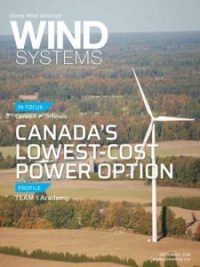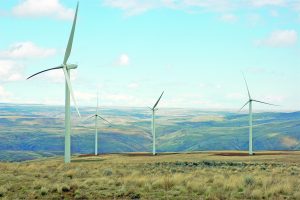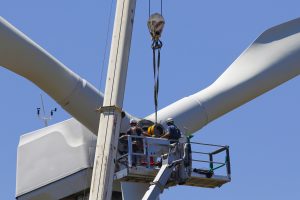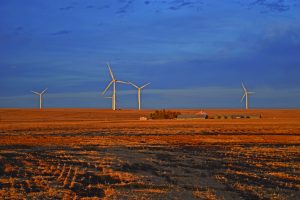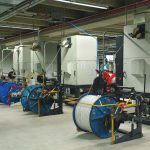Canada is the ninth largest wind-power producer in the world, with an installed capacity of 12,723 MW. At the beginning of 2018, we had 295 wind farms, comprising 6,415 individual turbines. There are wind facilities in every Canadian province and territory except Nunavut. More wind capacity has been built over the past decade than any other type of electricity generation, with the cost of wind generation falling by more than 67 percent over that time, according to the U.S. investment firm Lazard.
Wind energy is now a mainstream power source for electricity planners. And, in the past year, it has proven to be the lowest-cost source of new electricity generation across Canada. In December 2017, a competitive electricity-supply auction in Alberta yielded the lowest-ever price paid for wind energy in Canada, at a weighted average of CDN 3.7 cents per kilowatt hour for 592 MW of capacity.
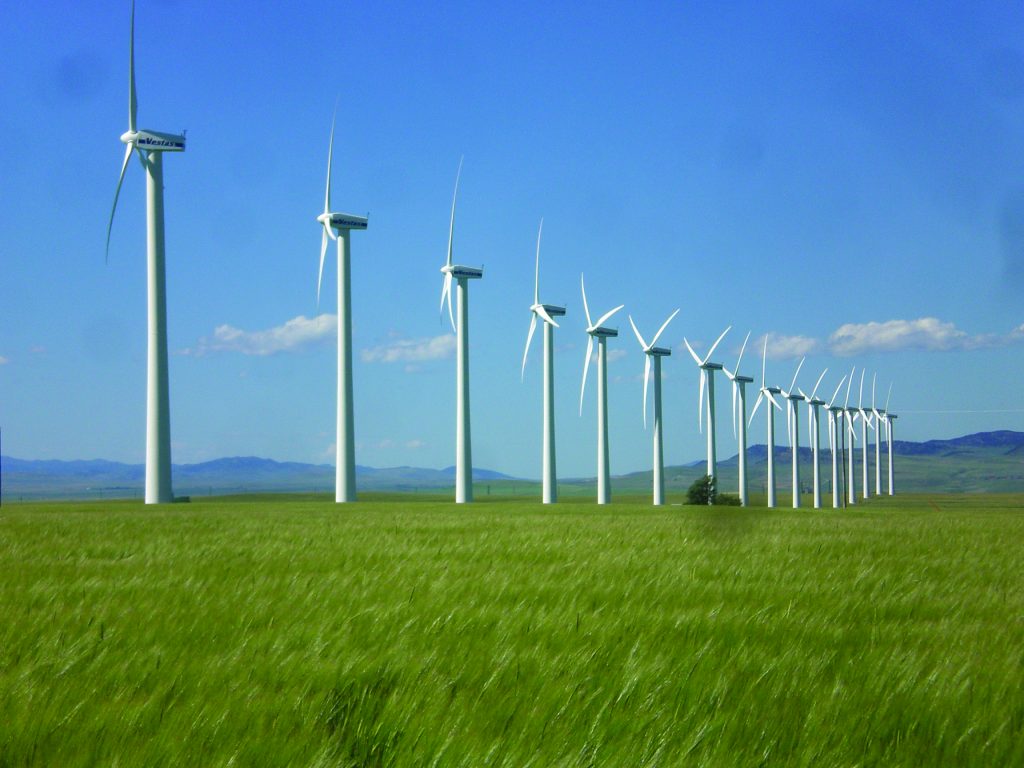
This momentum is a result of all the innovation in the global wind-energy sector. Turbines are getting bigger, with longer blades, to harvest more energy from the same site. Materials are more lightweight, operations run on big data, and turbine systems allow finer control and utilization of the wind resource. All of these improvements have spurred continuing cost decreases.
After several years where Ontario and Quebec led the way for new wind installations, the focus is now moving to the western provinces of Alberta and Saskatchewan, which are looking to add clean and low-cost generation to their power systems as they reduce their reliance on coal-fired generation.
Prairie provinces bullish on wind energy
Alberta and Saskatchewan share one of Canada’s best wind resources, with strong and consistent winds yielding capacity factors in the 40-percent range. Alberta has started on its plan to phase out 6,300 MW of coal-fired electricity generation by 2030, and pursue a “30 by ‘30” renewable energy target, in which 30 percent of electricity used by Albertans will come from renewable sources such as solar, wind, and hydro by 2030. Saskatchewan’s plan is to have wind energy make up 30 percent of the province’s electricity generating capacity by 2030, up from 5 percent today.
Oil and gas development is a big driver of these two western economies, but now wind energy —driven by the falling costs and environmental benefits — is poised to make a more substantive economic contribution as well. A study by The Delphi Group concluded that a commitment to develop 4,500 MW of wind energy capacity would result in 28,000 person-years of employment by 2030, and an investment of $8 billion, with $3.7 billion of it spent locally. Small communities and landowners would benefit from $25.5 million in property taxes and $13.5 million in lease payments.
Alberta and Saskatchewan already have a head start in creating a thriving wind-energy industry with the capabilities built up over decades of oil and gas development. Wind development will lean on existing strengths in the areas of site evaluation, site preparation and specialty construction, procurement of construction materials and metals, installation of electrical and control systems, and transportation and logistics.
Competitions in both Alberta and Saskatchewan will also benefit the province’s Indigenous communities. One of Alberta’s current procurement competitions under the Renewable Electricity Program requires participating projects to include at least 25 percent Indigenous equity. Criteria for the award of Saskatchewan’s first 200 MW power purchase agreement (PPA) also incentivizes Indigenous ownership and participation.
Ontario’s new government introduces pause on new electricity development
Ontario is currently Canada’s leading marketplace for wind energy, with just more than 5,000 MW of installed capacity, which is 40 percent of Canada’s total wind capacity. Wind supplies almost 8 percent of the province’s electricity demand.
The new provincial government has announced that its focus will be on finding efficiencies in the electricity sector to lower monthly bills. At the same time, the electricity sector has recently begun a multi-year major nuclear refurbishment program, which will require additional generating capacity during the 2020s to keep supply reliable as nuclear units are taken off line and other generation contracts are set to expire.
Wind energy is a good candidate to supply replacement power at a time when Ontario needs it most as it is the lowest-cost option for new electricity generation, with the added benefit of being emission-free. We continue to see opportunity in the Ontario market to supplement the wind industry’s major investments in terms of economic activity, direct and indirect wages, and contributions to the province’s GDP, as well as significant contributions to rural and Indigenous economies in the form of land-lease agreements, municipal tax revenues, and community partnerships and vibrancy funds.
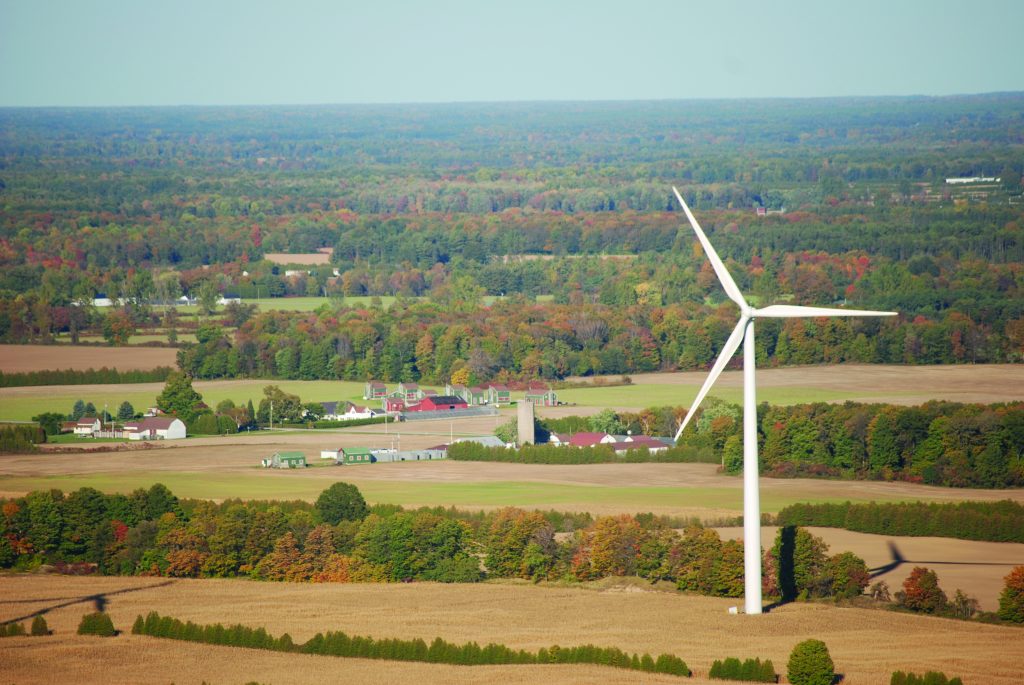
Significant economic contribution in Quebec
Quebec is Canada’s second-biggest market for wind power with 3,881 MW of electricity capacity produced at 40 wind farms. The province’s 2030 energy policy aims to increase renewable generation by 25 percent and decrease fossil fuel use by 40 percent over the next 15 years. With its low costs, strong support from local communities, and well-developed supply chain, wind is well positioned to respond to Quebec’s electricity needs.
The potential growth in Quebec’s wind industry is expected to benefit even more communities, which, according to a new study of the financial impacts of the province’s wind-energy operations, already benefit from annual revenues of $120 million to host communities, 70 percent of which are intended for local governments and First Nations communities. In addition, the federal and Quebec governments receive $48 million in wind-energy revenues.
Meeting climate change, de-carbonization, and electrification challenges
The government of Canada is committed to developing a sustainable, low-carbon economy. Canada is a signatory to the Paris Agreement, which aims to limit the increase in the average global temperature from pre-industrial levels to below 2 degrees Celsius. Various studies show that success requires countries to de-carbonize their electricity systems, and greatly expand the supply of emission-free electricity to substitute for fossil fuels in transportation, buildings, and industry. Canada’s commitment to implementing carbon pricing nationally in 2019 will help propel these two imperatives.
Canada’s existing electricity supply is 80 percent non-emitting. The Federal Government has called for this to improve to being 90 percent non-emitting by 2030, even as new supply is built, to help ensure the country is on track to be successful in using clean electricity to de-carbonize the economy. But according to a National Energy Board (NEB) reference scenario, the largest source of new electricity supply going forward is likely to be natural gas, and the percentage of non-emitting generation is only expected to grow marginally. In fact, the NEB says that natural gas generation could increase from 9.3 percent of Canada’s total in 2016 to 17.5 percent by 2040. The prospects of Canada meeting obligations consistent with the Paris Agreement would be significantly reduced in this scenario.
A significant expansion of low-cost and emission-free wind energy should be an obvious choice for satisfying future electricity demands while meeting climate change objectives.
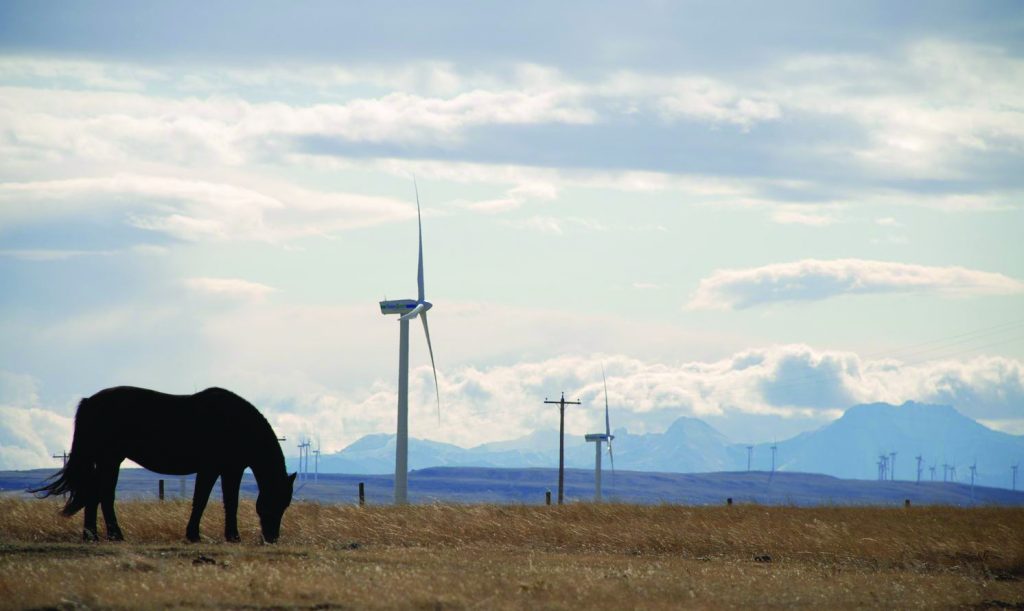
Beyond normal attributes of value
The wind-energy industry continues to evolve as North America’s electricity system slowly transforms into a smarter and more efficient grid that is becoming both more decentralized and interconnected. It is becoming clear that wind can provide more to the grid than our core benefits of being low cost, emission free, scalable, quick to construct, and powered by a free fuel.
For example, wind can provide reliable capacity by pairing with storage, demand response, and/or other non-emitting energies such as hydro, both for domestic reliability and for export opportunities. In Quebec, which has an almost entirely non-emitting electricity system, there is a keen focus on using both wind and hydro electricity to help de-carbonize the grid in the northeastern United States. Hydro-Quebec released a report recently outlining potential savings to the U.S. to de-carbonize its grid with Canadian wind and hydro imports rather than trying to do it domestically.
Wind energy can also provide a suite of grid services if encouraged to do so as regulatory and market frameworks modernize. A case in point is that wind energy can offer environmental attributes such as tradable Renewable Energy Certificates that guarantee that a supply of energy has been generated from a non-emitting energy source. It can also provide a broad range of ancillary services to the electricity grid, often more nimbly and more cost effectively than conventional sources, supporting the continuous flow of electricity so that supply will continually meet demand. These services include: operating reserve, regulation, reactive support, voltage control, primary frequency response, load following, and inertia and fast frequency response.
A bright future
There has been an inexorable movement within the wind-energy industry from a niche player to a mainstream power source, as this emission-free power option has seen costs rapidly decline as the technology has continued to advance. The future looks bright, as costs are forecast to continue moving downward. According to Bloomberg’s New Energy Outlook, by 2050 wind and solar technology will provide almost 50 percent of total global electricity supply, with the cost of wind energy forecast to drop by 58 percent and battery costs also to decline dramatically.
The industry has moved from being made of small start-up companies to some of the largest multi-national companies in the world. In North America, states and provinces best known for oil and gas development are now becoming huge proponents of wind power.
Globally, as well as in Canada, we are seeing an incremental but fundamental shift from a carbon-based economy to a commitment to de-carbonization and electrification of major segments of economies. This will require an unwavering focus on continuing to reduce emissions in the electricity system so clean electricity is ready to substitute for fossil fuels throughout the economy.
As Canada eventually moves to a grid that is closer to 100 percent renewable, it is clear that wind energy will have to play a much greater role in providing the low-cost and emission-free power that a low-carbon system requires, as well as providing the services the grid will need to maintain high levels of reliability.
















